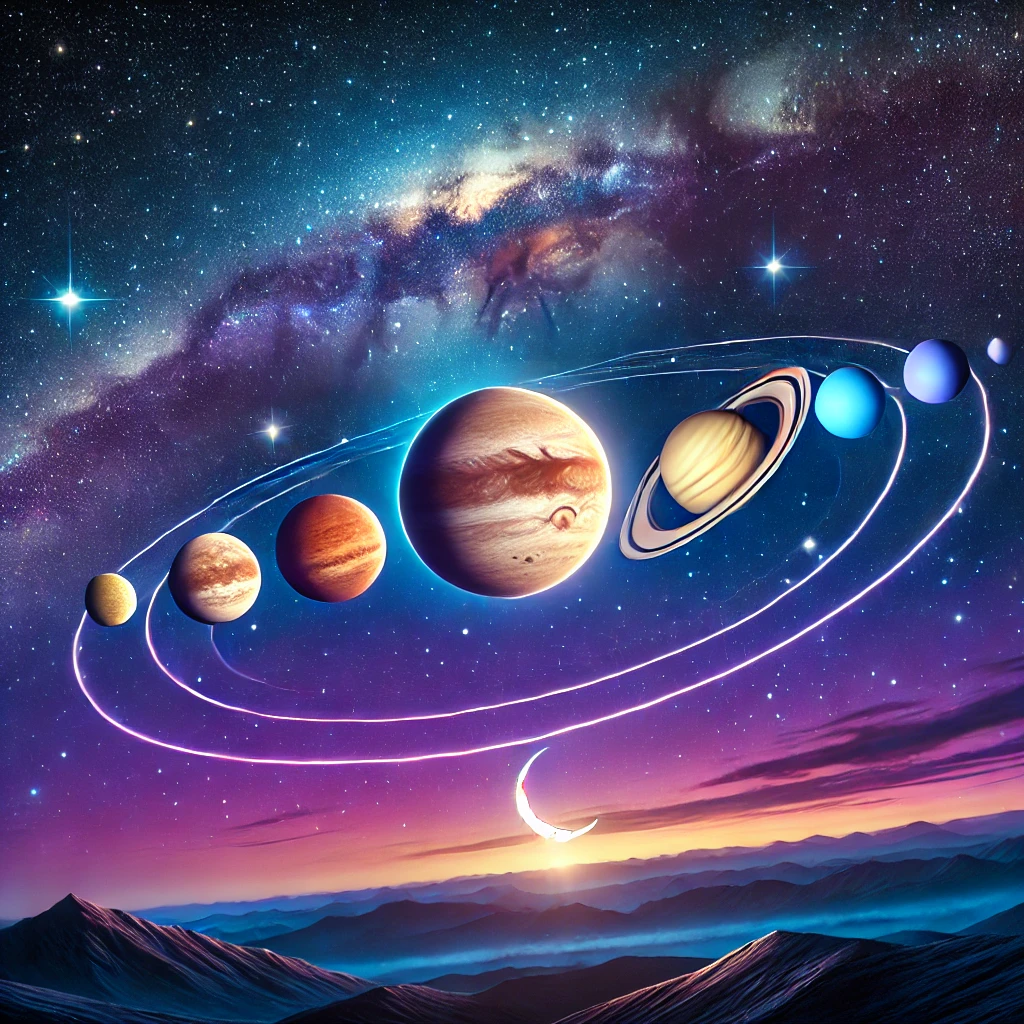“Rare Planet Parade: Venus Leads a Stunning Celestial Show in February”
A Spectacular Sky Event in February
As February nears its end, skywatchers have a unique chance to witness a rare planetary alignment featuring seven planets—Mercury, Venus, Mars, Jupiter, Saturn, Uranus, and Neptune. However, some planets will be challenging to see due to their proximity to the sun.
Best Time to Watch the Planet Parade
The best time to observe this celestial event is shortly after sunset. While Venus, Jupiter, and Mars will be easily visible, Mercury and Saturn will be harder to spot due to the sun’s glare.
According to Shannon Schmoll, director of the Abrams Planetarium at Michigan State University, Mercury will gradually become more visible each evening. For an optimal view, find a clear western horizon and use binoculars or a telescope to enhance visibility.
Where to Spot Each Planet
- Venus: The brightest planet, serving as a guide to locate others.
- Jupiter & Mars: Positioned higher in the sky, becoming clearer as the night progresses.
- Mercury & Saturn: Low on the horizon, best seen about 30 minutes after sunset.
- Uranus & Neptune: Require a telescope or binoculars for better viewing.
Astrophysics researcher Emily Elizondo from Michigan State University explains that the planets will be spread across different parts of the sky:
- Southwest: Mercury and Saturn
- Southeast: Mars and Jupiter
- Between them: Venus, Uranus, and Neptune
Use Venus as Your Guide
For an easy reference point, look for Venus, the most radiant object in the night sky. Venus will be high in the western sky, gradually descending toward the horizon before disappearing in mid-March. By April, it will reappear in the morning sky, according to NASA.
Unlike stars, Venus does not twinkle—its light remains steady. If you spot a bright, unwavering glow, you’ve found Venus. Mercury will be visible just below it, near the crescent moon.
Why Are So Many Planets Visible Now?
This rare planetary alignment happens because the planets have shifted to one side of the sun, making them appear close together from Earth’s perspective.
Seth Jacobson, assistant professor at Michigan State University, explains that planets always move along the ecliptic plane, forming a curved line in the sky. This month’s unique positioning creates a rare celestial alignment for observers.
Watch Live If Skies Are Cloudy
If cloud cover obstructs your view, you can watch a live stream of the event from the Virtual Telescope Project in Italy, which will capture the planets using robotic telescopes.
For those with a telescope, this is an excellent time to view Uranus and Neptune, which are usually too faint to see with the naked eye.
Don’t Miss This Rare Cosmic Event
This planetary lineup is a must-see for astronomy lovers and casual stargazers alike. Take advantage of this rare celestial show before the planets drift apart in the coming weeks!

